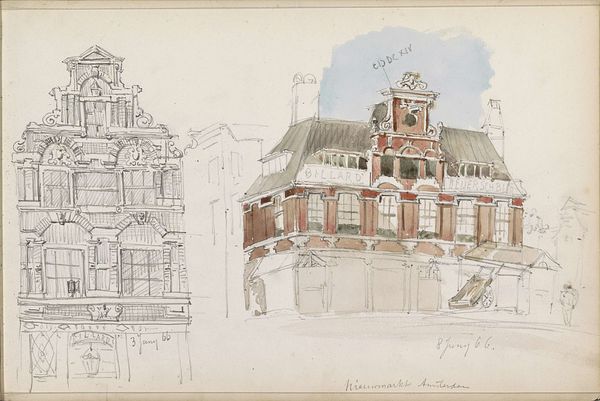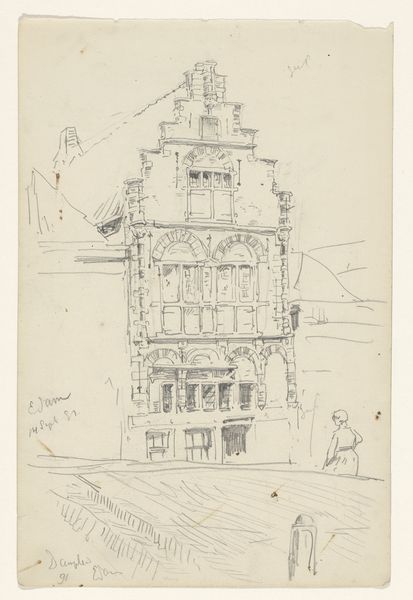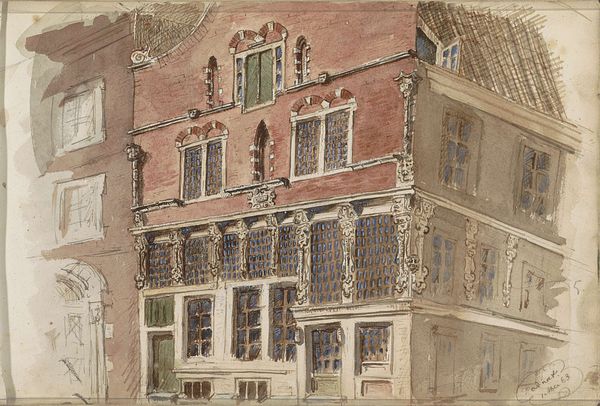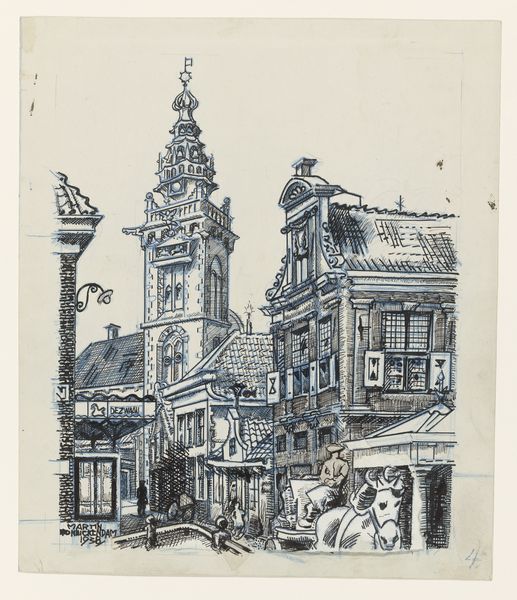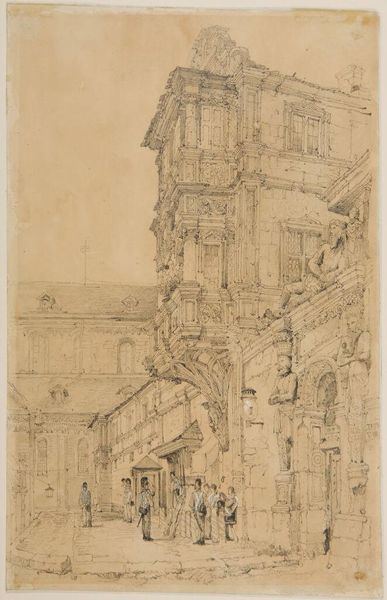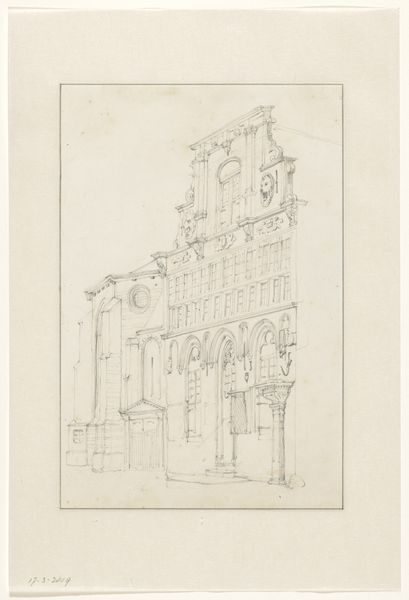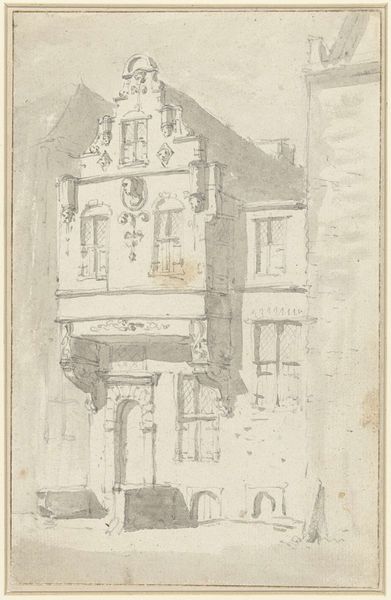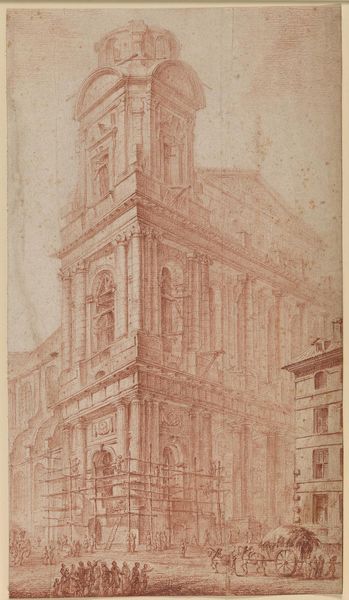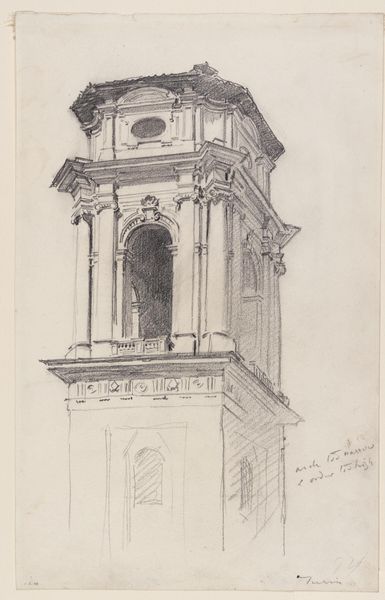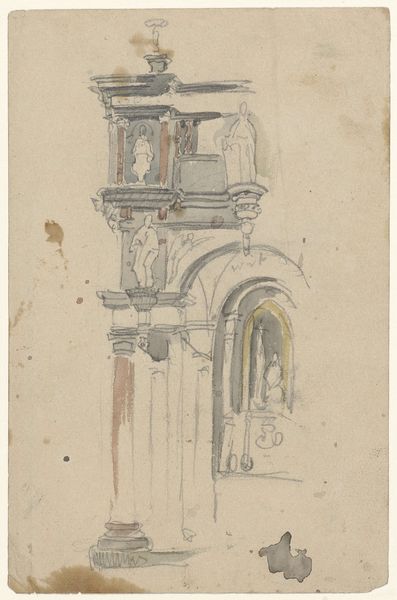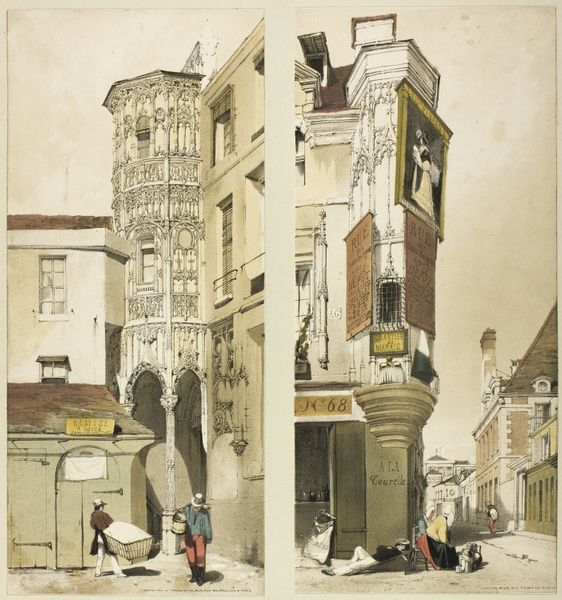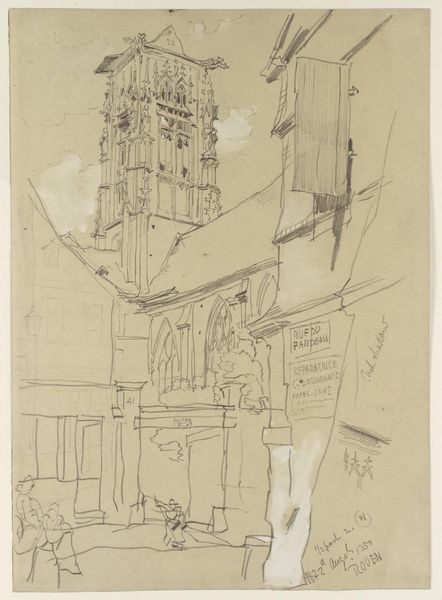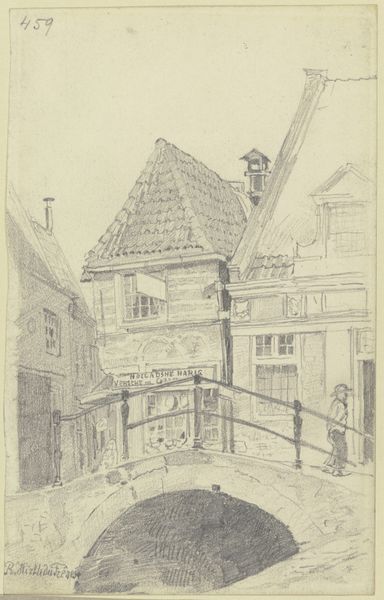
Dimensions: support: 346 x 248 mm
Copyright: CC-BY-NC-ND 4.0 DEED, Photo: Tate
Curator: Before us is William Richard Lethaby’s "Guildford," a watercolor work currently residing in the Tate Collections. Editor: It feels like a fleeting memory, doesn't it? That clock jutting out—a powerful symbol of time’s relentless march, rendered with such delicate strokes. Curator: Indeed, Lethaby was deeply engaged with architectural history. This work likely reflects his interest in the relationship between public buildings and civic identity. He was quite involved in the Arts and Crafts movement. Editor: The tower above the bay window seems to be reaching for something beyond the earthly plane. What is it that this place symbolizes within the community? Curator: Lethaby aimed to elevate the status of craft and design. This watercolor might represent a nostalgic yearning for a pre-industrial era, where craftsmanship and communal values were intertwined. Editor: The clock tells more than time; it is a guardian of tradition, watching over the passage of lives lived within those walls. A poignant perspective from an artist. Curator: Lethaby was critical of what he saw as the degradation of architecture by industrialization. His art subtly protests for social and aesthetic reform. Editor: I agree. It stirs feelings about transience, permanence, and the stories buildings silently hold within their bricks and mortar.
